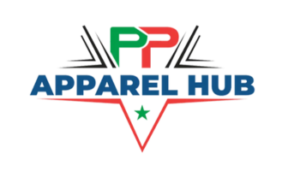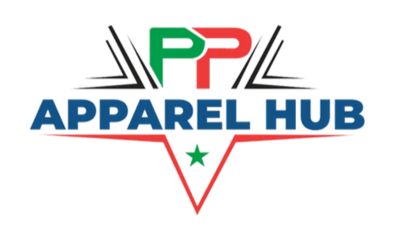The world of custom printing has evolved significantly in recent years, offering businesses and consumers a wide range of options when it comes to printing designs onto garments and textiles. Two of the most popular methods currently are DTG printing (Direct to Garment) and DTF printing (Direct to Film). While both are modern and efficient methods for printing high-quality, full-color designs, they operate in different ways and each comes with its own set of benefits and drawbacks.
When you plan to choose between DTG printing and DTF printing, it’s essential to understand the key differences that make each method suitable for different needs. From the type of fabric, they are best suited for to the overall production process, these methods offer distinct advantages depending on your business model, volume requirements, and desired outcome.
In this guide, we’ll break down each printing technique in detail and explore their differences.
What is DTG Printing?
DTG printing (Direct to Garment printing) is a relatively new technology that revolutionized the custom apparel industry. Unlike traditional screen printing, where ink is applied through stencils or screens, DTG printers work similarly to inkjet printers. A DTG printer directly applies water-based ink onto the fabric, one layer at a time, to create the desired design.
The process involves the use of specialized printers that can print directly onto garments, such as t-shirts, hoodies, and other textile products. This method allows for detailed, high-resolution designs with vibrant colors, making it a popular choice for intricate artwork or designs that involve gradient colors or small text. DTG printing is often favored for small batch orders or when producing designs that involve complex, multi-colored artwork, as it doesn’t require screens or setup, making it a more flexible option for custom printing.
Another key feature of DTG printing is its eco-friendliness. The water-based inks used in the process are less harmful to the environment compared to traditional plastisol inks. This makes it a great choice for businesses or consumers who want to prioritize sustainability in their printing choices.
However, DTG printing does have some limitations. For example, it is best suited for cotton or cotton-blend fabrics and typically works best on lighter-colored garments. It also tends to have a slower production time compared to other methods and can be more costly per unit for larger orders.
What is DTF Printing?
DTF printing (Direct to Film printing) is another innovative printing technique that has gained popularity in recent years, especially for businesses looking to print on a wider range of fabrics and materials. The process involves printing designs onto a special film, which is then transferred to the garment using heat and pressure. Unlike DTG printing, which prints directly onto the fabric, DTF printing uses a two-step process: first, the design is printed onto a film, and then it is transferred to the garment.
One of the major advantages of DTF printing is its versatility. It can be used on a wide variety of fabrics, including cotton, polyester, nylon, and even non-textile materials such as leather. Additionally, DTF printing allows for vibrant, durable designs with fine details, much like DTG printing, but with the added flexibility to print on a broader range of fabrics. The printing process itself involves high-quality, water-based inks and a special powder adhesive that helps the ink bond to the fabric during the transfer process.
DTF printing is particularly well-suited for batch printing and mass production because it tends to be faster than DTG printing. It is also less dependent on fabric type, as it can be used on both light and dark-colored garments without the need for special pre-treatment, which is often required in DTG printing.
However, while DTF printing offers incredible flexibility, the setup can be more time-consuming due to the film and adhesive steps. It also involves additional steps to cure the ink and powder adhesive, which may require extra equipment, adding to the overall cost of the process.
What is the Difference Between DTF and DTG?
While both DTF printing and DTG printing are highly regarded for their ability to produce vibrant, high-quality designs, they differ in a number of ways that affect the final output and overall production process. Below, we’ll highlight the key differences between the two printing methods.
Printing Process
- DTG Printing: The design is printed directly onto the garment using a specialized inkjet printer, which applies water-based inks directly to the fabric.
- DTF Printing: The design is printed onto a special film, which is then transferred to the garment using heat and pressure.
Fabric Compatibility
- DTG Printing: Best suited for cotton or cotton-blend fabrics and lighter-colored garments. It’s less effective on synthetic materials or dark fabrics without additional pre-treatment.
- DTF Printing: Offers more versatility, as it works well on cotton, polyester, nylon, and a wide range of other materials. It’s also effective on both light and dark-colored fabrics.
Durability
- DTG Printing: Provides good durability but may be less resistant to wear and tear over time compared to DTF printing, especially when printed on lighter-colored garments.
- DTF Printing: Known for its excellent durability, with designs that can withstand repeated washing and heavy use.
Cost
- DTG Printing: The initial cost of a DTG printing setup can be high, and the cost per unit can be more expensive for smaller orders due to the setup time involved. However, it is highly cost-effective for small batch printing and custom designs.
- DTF Printing: While initial setup costs for DTF printing can also be significant, the per-unit cost tends to be lower for larger orders, making it a more cost-effective option for high-volume productions.
Speed and Production Time
- DTG Printing: Tends to have a slower production time, especially for larger orders, due to the time it takes to print directly onto the garment.
- DTF Printing: Generally faster than DTG printing because the design is printed onto film first and then transferred to the garment, which can speed up the overall production process.
Costs
DTG printing tends to have a higher cost per unit, especially for small batch orders. This is primarily because it requires specialized equipment, pre-treatment of fabrics, and longer printing times. The inks used in DTG printing are also water-based, which can sometimes be more expensive compared to other ink types. However, the setup for smaller orders is relatively straightforward, and there are no additional steps required, such as transferring designs or applying adhesive powders.
On the other hand, DTF printing offers lower production costs for high-volume orders. While the initial investment for DTF printing equipment can be significant due to the need for specialized film, adhesives, and transfer equipment, the cost per unit decreases with larger production runs. This makes DTF printing a more cost-effective option for businesses that need to print in bulk or for customers looking to place large orders.
Production Time
DTG printing has a longer production time due to the need for pre-treating fabrics, followed by printing each design directly onto the garment. This process can take longer, especially for intricate designs or multi-color artwork, which can slow down production. The print area must also be dried and cured after printing, which adds additional time to the process.
In contrast, DTF printing tends to be faster because the design is first printed onto a film and then transferred to the garment. Once the design is printed, it’s a quicker process to cure the ink and adhere the design to the fabric. For businesses looking to produce high volumes of prints in a short amount of time, DTF printing may be a better option.
Fabric Options
Both DTG printing and DTF printing have their own fabric compatibility. DTG printing excels when printing on cotton or cotton-blend fabrics and works best on lighter-colored materials. However, it can be a challenge to print on dark fabrics or non-cotton materials without additional pre-treatment or special inks.
On the other hand, DTF printing is highly versatile and works on a broader range of fabrics, including cotton, polyester, nylon, and blends. It also works well on both light and dark-colored fabrics, making it a popular choice for businesses or individuals looking for a wide variety of fabric options.
Print Durability
When we talk about the durability, DTF printing generally offers superior results. The designs produced with DTF printing is highly resistant to fading, cracking, or peeling, even after multiple washes. The adhesive used in DTF printing creates a strong bond between the ink and fabric, ensuring that the print will last for a long time.
DTG printing also provides durable prints, but they tend to fade faster over time, especially if printed on lighter-colored fabrics. The wear and tear from frequent washing can lead to some degradation of the design, particularly if the fabric isn’t properly pre-treated.
FAQs
Does DTG last longer than DTF?
DTG prints, although vibrant and detailed, tend to fade over time, especially with frequent washing. On the other hand, DTF prints are generally more durable and resistant to wear and tear, lasting longer compared to DTG prints.
Is DTF more expensive than DTG?
Generally, DTF printing tends to be more affordable than DTG printing, especially for small to medium runs. DTG printing can become quite expensive due to ink costs and machine maintenance.
What is the disadvantage of DTF?
One disadvantage of DTF printing is that it requires more steps, including printing onto film and applying adhesive powder. While this process can produce high-quality results, it can also lead to more material waste and additional steps compared to DTG printing.
Is DTF printing high quality?
Yes, DTF printing produces high-quality prints with vibrant colors and excellent durability, especially on a wide range of fabrics. The transfer process ensures that the design adheres well to the fabric, leading to long-lasting prints.



